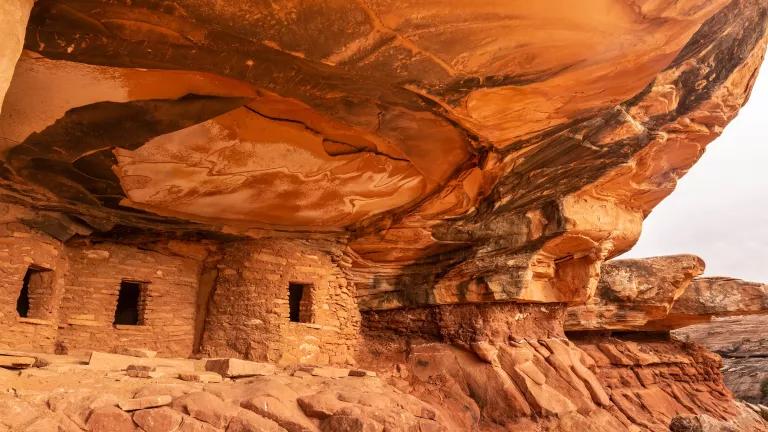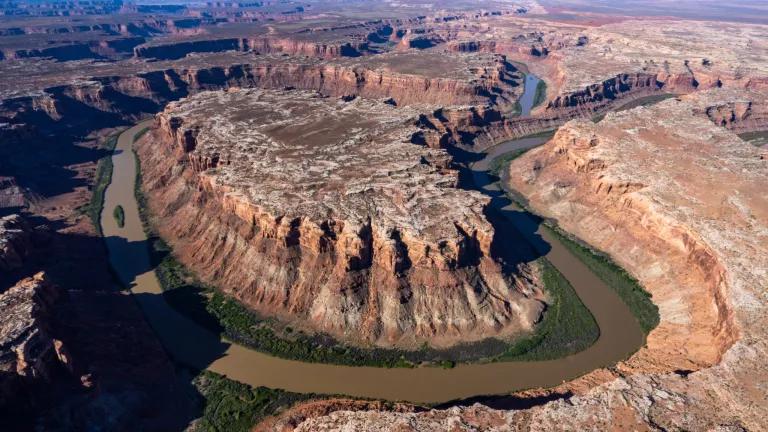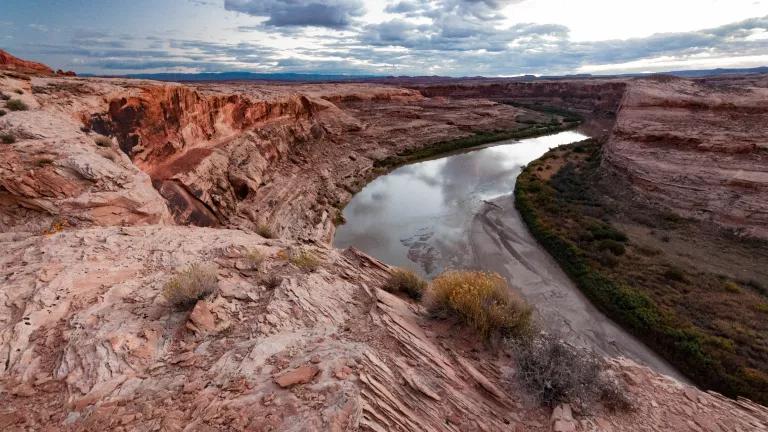Factory Butte Should Stay Off-Limits to Off-Roading
NRDC and the Southern Utah Wilderness Association are suing the BLM for ignoring the environmental harms of off-road vehicle use around the iconic Utah landmark.

Off-road vehicle tracks cross the land leading to Factory Butte, in Caineville, Utah.
NRDC and the Southern Utah Wilderness Association are suing the BLM for ignoring the environmental harms of off-road vehicle use around the iconic Utah landmark.
Earlier this summer, the Bureau of Land Management (BLM) quietly ended nearly 13 years of protection of one of Utah’s iconic natural landmarks. Standing as a lonely monolith against the southwestern sky, Factory Butte and the landscape that surrounds it is one of those majestic deserts that draws people from across the country. Unfortunately, the fragile and vast ecosystem upon which Factory Butte sits has also borne periods of destructive use by off-road vehicle (ORV) users, which led to lasting soil damage, declining endangered species populations, and other negative environmental impacts.
Faced with public pressure and well-documented damage to the natural resource values of the areas around Factory Butte, the BLM disallowed ORV use in the area in 2006. Soon after, the agency’s resource management process identified a number of needed management actions to be undertaken before it would even consider lifting the closure. Even with these measures, the BLM indicated in its environmental impact analysis that the area around Factory Butte should remain permanently closed to unrestricted cross-country travel. As all this took place, the area has remained closed, though in recent years there has been a noted uptick in violations by ORV users—and limited BLM enforcement of the closure.
The BLM has a duty to manage our public lands for a wide variety of uses and users. It is also charged with preventing activities that cause extensive damage to things like soil or endangered species. The agency’s decision to, under the cloak of secrecy, reopen a vast and fragile ecosystem to one of the most destructive uses possible, is irresponsible and wrong. For this reason, NRDC and the Southern Utah Wilderness Association are taking the BLM to court.
In our lawsuit, we allege that the BLM has violated the National Environmental Policy Act (NEPA) and acted in an arbitrary manner under the Administrative Procedure Act (APA) by failing to undertake any environmental review of its decision to reopen 5,400 acres around Factory Butte to unrestricted ORV use, despite the agency’s own evidence of the harms this would bring. Its decision also shuts out the public’s right to influence the management of our shared public lands.
In addition, by failing to update earlier environmental analyses, the BLM violated NEPA when it failed to, at the very least, conduct a supplemental environmental analysis to account for the significant changes that have occurred in the Factory Butte area over the past decade, including the significant changes being wrought by the climate crisis.
The BLM was right to restrict cross-country travel in this extraordinary iconic area years ago. While providing access to our shared public lands is a critical part of the agency’s mission, that access must not come at the cost of an area’s ecosystems and species. Unrestricted ORV use in this area is simply incompatible with its fragility. Those who hope to appreciate its awe-inspiring beauty would instead confront a vast web of tire ruts carved into the desert. And the area faces a potential loss of its highly vulnerable desert species.
We hope our lawsuit once again demonstrates these facts and brings renewed protection of this iconic western landscape.




